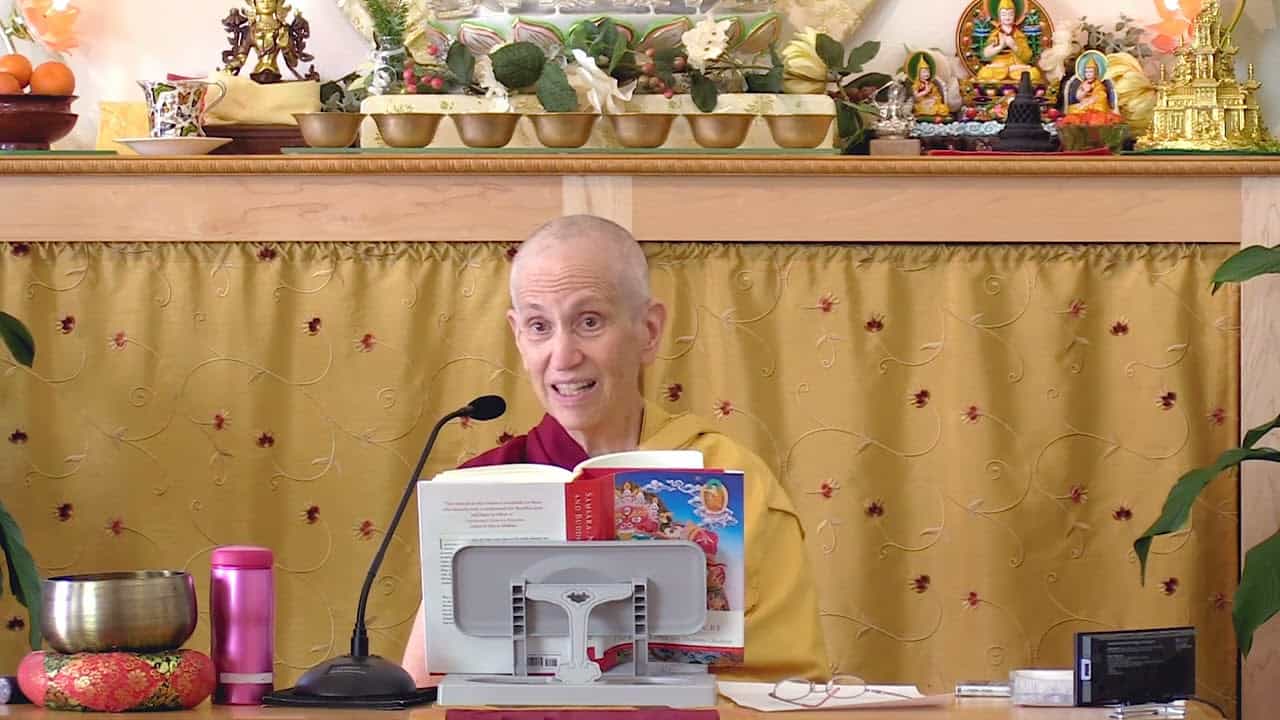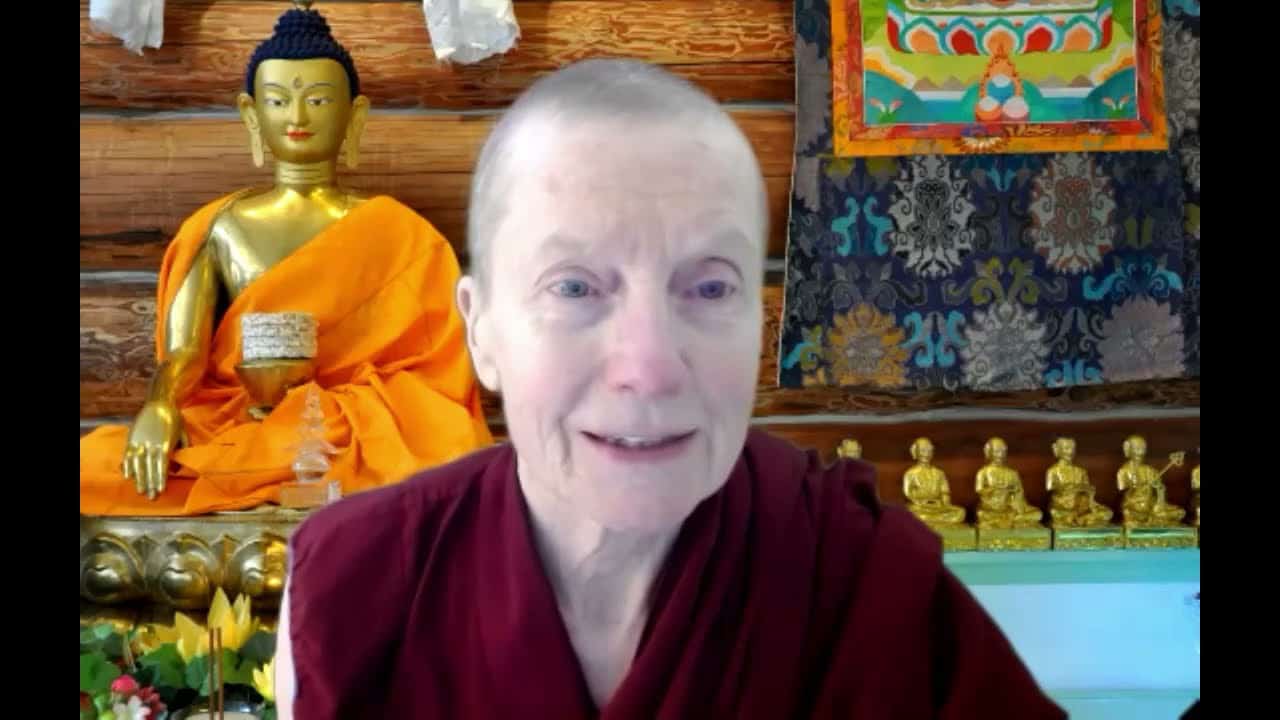Four attributes of true cessations
11 Samsara, Nirvana, and Buddha Nature
Part of an ongoing series of teachings (retreat and Friday) based on the book Samsara, Nirvana, and Buddha Nature, the third volume in The Library of Wisdom and Compassion series by His Holiness the Dalai Lama and Venerable Thubten Chodron.
- Cessation of various levels of afflictions
- Innate afflictions and acquired afflictions
- Problems due to clinging to identities
- True cessation of an arhat versus a Buddha
- Cessation, peace, magnificence, definite emergence
- Misconceptions counteracted by the four attributes
- Thinking nirvana is not possible
- Considering states of meditative absorption as nirvana
- Viewing temporary or partial cessation as nirvana
- Thinking it is possible for nirvana to deteriorate
- Importance of having a full understanding of the whole path
- Overview of four attributes of the true path
- Process of developing the wisdom realizing emptiness
Samsara, Nirvana, and Buddha Nature 11: Four Attributes of True Cessations (download)
Contemplation points
- In your own words, explain what nirvana is and how to attain it.
- What are innate and acquired afflictions? Make some examples of each. What are some in particular that you struggle with or hold strongly to? How do they limit you? How do these cause obstacles in your life and practice?
- What are the four attributes of true cessation? What is meditating on these points leading us to understand?
- To get a small taste of what nirvana could be like, imagine that an affliction such as anger is totally absent from your mind. No matter what someone says or does, no matter what happens, you will never get angry again.
- How do you counteract discomfort and / or fear when thinking about emptiness?
- Reflect that nirvana is the complete absence of all afflictions forever. Aspire to attain it.
Venerable Thubten Chodron
Venerable Chodron emphasizes the practical application of Buddha’s teachings in our daily lives and is especially skilled at explaining them in ways easily understood and practiced by Westerners. She is well known for her warm, humorous, and lucid teachings. She was ordained as a Buddhist nun in 1977 by Kyabje Ling Rinpoche in Dharamsala, India, and in 1986 she received bhikshuni (full) ordination in Taiwan. Read her full bio.


